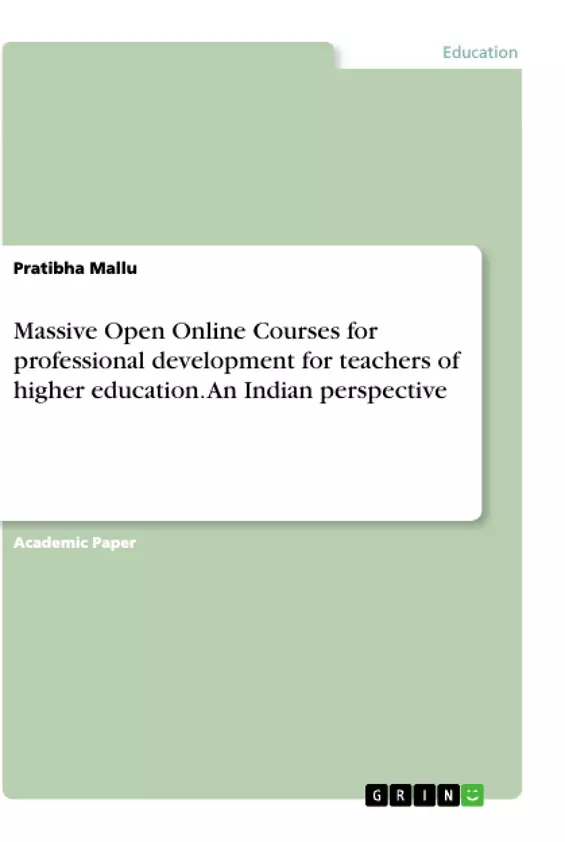The main aim of the present paper is to explore the importance and contribution of MOOCs for the professional development of teachers in higher education institutes. MOOCs are online courses for anyone with internet access. A qualitative research has been conducted to find out the opinion of teachers. At present MOOCs are popular in higher education institutes particularly in engineering and management. In general, teachers’ attitude towards MOOCs is positive. MOOCs can be used for teachers who need: additional insights into topic of their choice, to update their skills, to expand their knowledge and to learn innovatory and current trends in teaching-learning.
MOOCs require some more momentum in the form of teachers’ awareness, credit recognition, etc. In the future, there will be high demand for MOOCS for professional development, since professionals can continue their services, apart from updating their skills. Thus, MOOCs can be incorporated gradually in a step-by-step manner to cope with the current trends of teachers’ professional development along with the updated rules and regulations.
Inhaltsverzeichnis (Table of Contents)
- Abstract
- Introduction
- Definition
- Types of MOOCS
- MOOCs in India
- Research methodology
- Teachers' opinion findings
- Discussion and conclusion
- References
Zielsetzung und Themenschwerpunkte (Objectives and Key Themes)
This paper explores the significance and contribution of MOOCs for the professional development of higher education teachers in India. The study aims to understand the opinions of teachers on the use of MOOCs and their potential benefits for professional growth.
- The importance of MOOCs for teacher professional development
- The contribution of MOOCs to teacher professional development
- The use of MOOCs in higher education institutions in India
- Teachers' attitudes towards MOOCs
- The potential of MOOCs for future teacher development
Zusammenfassung der Kapitel (Chapter Summaries)
The introduction provides an overview of MOOCs and their relevance to teacher professional development. The paper highlights the need for ongoing professional development for educators in a rapidly changing society and how MOOCs can address this need. It discusses the potential benefits of MOOCs for teachers, including access to current knowledge and skills, cost-effectiveness, and flexibility.
The paper then delves into the definition and types of MOOCs, providing different perspectives on their structure and design. It outlines the key characteristics of MOOCs, emphasizing their openness, accessibility, and absence of prerequisites.
The next section focuses on the application of MOOCs in India, exploring their increasing popularity in higher education institutions, particularly in engineering and management fields.
Schlüsselwörter (Keywords)
This research paper focuses on MOOCs, professional development, continuing education, and higher education in the Indian context. It explores the use of MOOCs as a tool for enhancing teacher capabilities and fostering a more dynamic and informed educational landscape.
- Quote paper
- Dr. Pratibha Mallu (Author), 2021, Massive Open Online Courses for professional development for teachers of higher education. An Indian perspective, Munich, GRIN Verlag, https://www.grin.com/document/1008633



